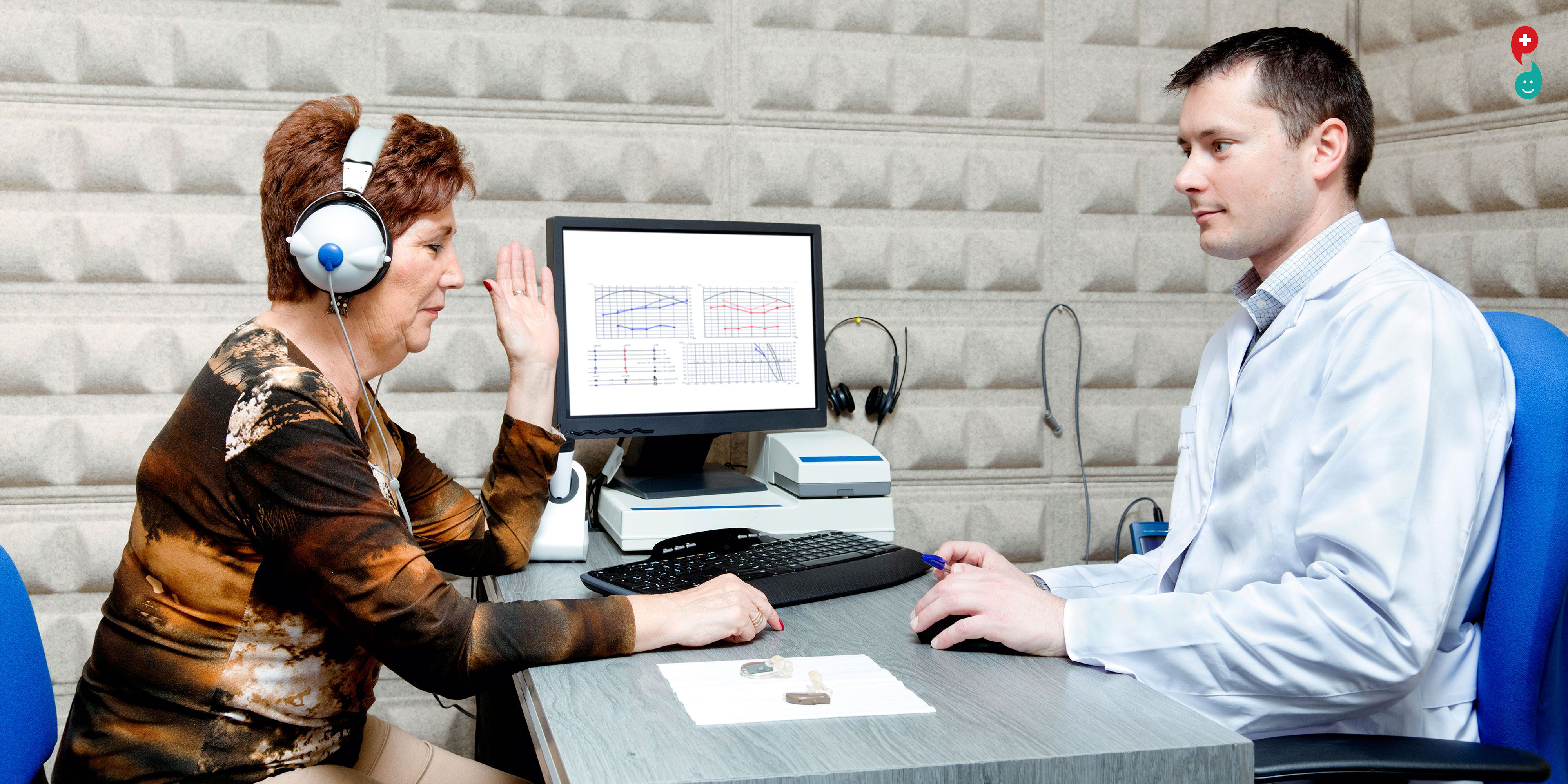
You may have had your hearing tested in school or at the doctors office. You might remember putting earphones on and raising your hand whenever you heard the "beep." This is pure-tone testing. It is also called air conduction testing since the sounds go through your outer and middle ear. This test helps find the quietest sound you can hear at different pitches, or frequencies. Having earphones on lets the sounds go to one ear at a time.
Sometimes, it is not possible to use earphones. An example is when a child refuses to wear them. In these cases, sounds come through speakers inside a sound booth. This is sound-field screening. The sounds go into both ears at the same time. This type of testing does not show if there is a hearing loss in only one ear.
You may respond to the sounds by
Raising a finger or hand
Pressing a button and pointing to the ear where you heard the sound
Saying "yes" to indicate that you heard the sound
The audiologist records your results in an audiogram.
Testing Young Children
Young children sometimes do better if they play games. There are ways to test your child's hearing through play. The most common ways are visual reinforcement audiometry (VRA) and conditioned play audiometry (CPA).
Visual Reinforcement Audiometry
This is the best way to screen children between 6 months and 2 years old. The audiologist will teach your child to look to where the sound came from. When your child looks in the direction of the sound, he sees a moving toy or flashing light. This rewards your child for looking at the sound. Both ears are tested at the same time.
Conditioned Play Audiometry
This type of testing is good for toddlers and preschoolers, ages 25. Your child will do something each time she hears a sound. She might put a block in a box, put pegs in a hole, or put a ring on a cone.
Bone Conduction Testing
Audiologists use this type of testing when something, such as wax or fluid, is blocking your outer or middle ear.
For this test, the audiologist will put a small device behind your ear or on your forehead. The sounds sent through this device cause your skull to gently vibrate. This vibration goes to the inner ear, or cochlea, and skips the outer and middle ear. This test tells the audiologist how well you hear and if there is a problem in the outer or middle ear.







